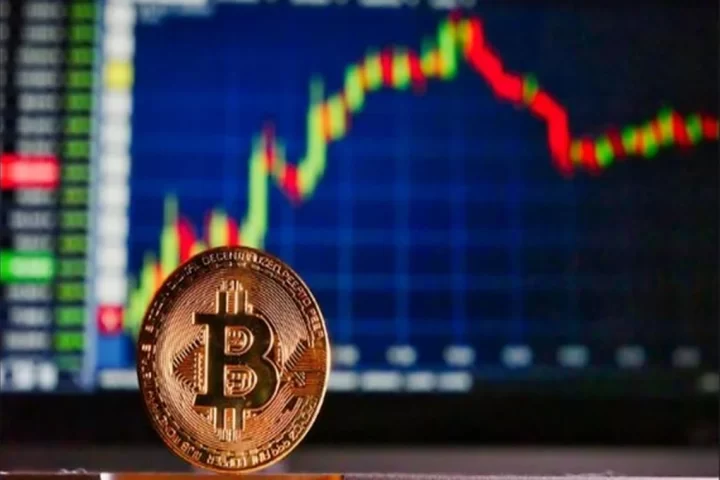The adoption of Spot Bitcoin exchange-traded funds (ETFs) is facing delays due to meticulous due diligence processes conducted by major trading platforms.
LPL Financial Holdings, one of the United States’ largest independent broker-dealers, is currently scrutinizing the recently approved Bitcoin ETFs.
This evaluation aims to determine their suitability for approximately 19,000 independent financial advisers overseeing assets worth $1.4 trillion.
Rob Pettman, Vice President of Wealth Management Solutions at LPL Financial, explained, “We just want to see how they work in the markets.”
Due diligence involves a thorough analysis to understand risks, opportunities, and the authenticity of investments before allocating resources.
LPL Financial intends to complete its due diligence on Bitcoin ETFs within three months.
They are particularly concerned about the possibility of ETFs being shut down if they fail to accumulate significant assets.
Pettman emphasized the negative impact this could have on investors, financial advisers, and the operational costs incurred by firms like LPL.
Bloomberg data reveals that in 2023, 253 ETFs, including cryptocurrency-related ones like VanEck Digital Assets Mining ETF and Volt Crypto Industry Revolution, closed down with average assets of $34 million.
James Seyffart, Bloomberg’s ETF analyst, believes that the widespread adoption of Bitcoin ETFs might be slower than anticipated.
He predicted during a private webinar with CryptoQuant in January that ETFs could attract $10 billion in inflows within their first year.
READ MORE: Bitcoin Stumbles as Strong U.S. Job Data Sparks Rate Hike Fears
Seyffart explained that large institutions and platforms have approved lists, limiting their investment options.
He added, “I do not think we’re going to get over $100 billion in the first year or two. To put it in perspective, gold ETFs have about $100 billion in the U.S. in total.”
As of January 31, all the Bitcoin ETFs approved the previous month collectively held 656,421 BTC, reflecting a 3% increase from the initial total of 637,610 BTC, valued at nearly $27 billion at current prices.
The ETFs’ performances were affected by outflows from the Grayscale Bitcoin Trust, which sold 132,195 Bitcoin following its transition from an over-the-counter product to a listed ETF.
LPL’s Pettman summed up the situation, stating, “Time is going to tell on the investment thesis, and that’s essentially what we’re monitoring at the moment.”
The cautious approach by platforms like LPL Financial highlights the need for thorough evaluation before embracing the Bitcoin ETFs in the market.
On February 2nd, Bitcoin experienced a sudden drop as the Wall Street trading day began, with a notable $500 hourly candle dip recorded on Bitstamp.
This unexpected plunge was in direct response to the release of the United States unemployment data, which revealed a surprising surge.
The figures for January nonfarm payrolls came in at a staggering 353,000, almost double the expected 185,000, catching both the market and analysts off guard, according to Reuters.
The immediate market reaction suggested that the previously assumed negative impact of restrictive economic policies on the U.S. economy might be less severe than anticipated.
This led to concerns that interest rates could remain elevated for a longer period, potentially reducing liquidity in various asset classes, including cryptocurrencies.
On January 31st, the Federal Reserve had unanimously decided to maintain interest rates at their existing levels, with Fed Chair Jerome Powell trying to quell speculation about rate cuts occurring in March.
The release of the jobless data further cemented the belief that a rate cut before May was unlikely, causing the odds of such a move in March to drop from 45% earlier in the week to 17.5%.
Caleb Franzen, the founder of Cubic Analytics, responded to the data by highlighting that revisions had actually increased the December job figures, suggesting that doubters of the economy were consistently proven wrong.
READ MORE: Bitcoin’s Persistent Sideways Trend: A Familiar Pattern Amidst Market Uncertainty
Financial commentator Tedtalksmacro remained optimistic, asserting that strong employment data was beneficial in the long run, and the market had simply overreacted by pricing in rate cuts prematurely.
In addition to these challenges, the U.S. Dollar Index (DXY) surged to new 2024 highs, exerting further pressure on the cryptocurrency market.
However, there was a glimmer of hope for Bitcoin enthusiasts as outflows from the Grayscale Bitcoin Trust (GBTC), a recently launched spot Bitcoin exchange-traded fund (ETF), provided some relief.
Coinbase received 4,400 BTC in inflows on that day, a decrease from previous days and a significant drop from the peak of 25,000 BTC observed in January.
Despite this, total net inflows reached $38 million, signifying continued interest in cryptocurrencies.
In a volatile market shaped by economic data and monetary policy speculation, Bitcoin and other cryptocurrencies faced uncertainty and challenges, with traders and analysts closely monitoring every development.
Bitcoin has been trapped in a relatively narrow price corridor for approximately 150 days, ranging from $40,000 to $44,999 as of February 2, 2024.
This unyielding price range has frustrated both bullish and bearish investors.
However, a recent analysis by James Van Straten, a research and data analyst at CryptoSlate, suggests that this behavior is not unusual for Bitcoin.
Van Straten’s examination of Bitcoin’s historical price movements in $10,000 increments between $10,000 and $49,999 reveals that the cryptocurrency typically spends anywhere from 100 to 250 days within these ranges.
Therefore, the current sideways movement falls in line with Bitcoin’s historical trading patterns and should be viewed as characteristic behavior rather than an anomaly.
Despite Bitcoin reaching two-year highs in 2024, as well as experiencing lows of $38,500, these price extremes have failed to trigger a sustained price trend.
Instead, BTC/USD has remained within the $5,000-wide trading range.
This behavior has persisted even after the introduction of spot Bitcoin exchange-traded funds (ETFs), much to the disappointment of market commentators.
Looking ahead, the upcoming block subsidy halving event, scheduled to occur in just over two months, has shifted market sentiment towards a belief that Bitcoin will only regain bullish momentum several months after the halving event.
READ MORE: Tech Titans Microsoft and Alphabet Soar in Q4 with AI and Cloud Advancements
Until then, it is expected that the familiar price levels will continue to define the cryptocurrency landscape.
One of the respected voices in the crypto community, Michaël van de Poppe, founder and CEO of MN Trading, maintains a consistent outlook on Bitcoin’s trajectory.
He anticipates a range-bound trend with Bitcoin trading between $38,000 and $48,000, a prediction he has held for approximately two months.
Van de Poppe also suggests the possibility of a short-term correction followed by a mild pre-halving rally, pushing Bitcoin’s price to around $48,000.
In conclusion, Bitcoin’s extended period of trading within a $5,000 price range may be testing the patience of investors, but it aligns with historical patterns.
With the block subsidy halving event looming on the horizon, market participants are bracing for a continuation of this range-bound behavior until a more substantial bullish trend takes hold in the months to come.
ARK Invest’s latest research report for 2023 emphasizes Bitcoin’s exceptional historical performance compared to major assets and recommends an institutional portfolio allocation of up to 19.4% to optimize risk-adjusted returns.
Released on January 31st, the annual report explores the convergence of blockchain technology, artificial intelligence, energy storage, and robotics.
A substantial portion of the report focuses on Bitcoin portfolio allocation, tracing its performance since inception and scrutinizing its metrics over the past three years.
Long-term Performance:
ARK’s data reveals Bitcoin’s remarkable performance over extended periods, outshining traditional assets. Over seven years, Bitcoin boasted an annualized return averaging 44%, while other major assets averaged just 5.7%.
The report notes that investors with a “long-term time horizon” benefited significantly from holding Bitcoin for extended periods, as its historical volatility often masked its long-term profitability.
Optimal Allocation:
The report delves into the volatility and return profiles of traditional asset classes, suggesting that a portfolio aiming for maximized risk-adjusted returns would have allocated 19.4% to Bitcoin in 2023.
This represents a significant change over the past decade, with the optimal allocation varying from 0.5% in 2015 to 19.4% in 2023 on a five-year rolling basis.
Potential Valuations:
ARK’s research contemplates a hypothetical scenario in which institutional investments from the $250 trillion global investable asset base follow the recommended 19.4% Bitcoin allocation.
If just 1% of global assets were invested, Bitcoin’s price could reach $120,000 per BTC. Allocating the 4.8% average maximum Sharpe ratio from 2015 to 2023 could drive Bitcoin’s price to $550,000.
Following ARK’s 19.4% allocation, Bitcoin could reach an astounding $2.3 million per coin.
ARK’s research draws on empirical market data to justify its 19.4% Bitcoin allocation for risk-adjusted returns, a shift from previous years’ recommendations.
In January 2022, figures like Ray Dalio and Bill Miller suggested a portfolio allocation of 1% to 2% in Bitcoin.
A year earlier, JPMorgan’s investment strategists proposed a 1% portfolio allocation to Bitcoin as a hedge against fluctuations in traditional assets like stocks, bonds, and commodities.
ARK Invest’s report underscores Bitcoin’s evolving role as a viable and potentially lucrative asset class in institutional portfolios, reflecting the growing acceptance and recognition of cryptocurrencies in the broader financial landscape.
In 2023, Core Scientific achieved a remarkable milestone by emerging as the largest publicly listed cryptocurrency mining company in North America.
Their feat involved the mining of an impressive 19,274 Bitcoins, valued at an astounding $812 million. This achievement was unveiled in a recent announcement made on January 31st.
Core Scientific’s mining operations span across various states in the United States, including Georgia, Kentucky, North Carolina, North Dakota, and Texas.
Within these regions, they successfully mined 13,762 Bitcoins. Furthermore, their clients and customers collectively contributed to the impressive total by mining an additional 5,512 Bitcoins throughout the year.
This achievement firmly established Core Scientific as the foremost Bitcoin miner in North America.
To accomplish this, Core Scientific operated a staggering 209,000 Bitcoin miners, a combination of owned and co-located units, amassing a formidable energized hash rate of 23.2 exahashes per second at their data centers in 2023.
Impressively, the company also disclosed its annual mining report, highlighting a reduction in power consumption at their data centers.
In December 2023, they delivered 480 megawatt hours to local grid partners and a grand total of over 131,000 megawatt-hours throughout the year.
The process of Bitcoin mining involves solving intricate computational puzzles, essential for proof-of-work, which validates and adds new blocks to the Bitcoin blockchain.
Miners employ specialized hardware and software to generate cryptographic hashes that meet specific transaction criteria.
READ MORE: Bank of Japan and Government Collaborate on Digital Yen, Targeting 2024 Resolution
As a reward for their efforts in verifying transactions and adding them to the blockchain, miners receive a certain amount of Bitcoin, currently set at 6.25 BTC per mined block.
Core Scientific’s journey as a Bitcoin mining company has been nothing short of a rollercoaster ride.
In December 2022, they found themselves filing for Chapter 11 bankruptcy amid a challenging crypto market characterized by a prolonged bearish trend that saw Bitcoin prices plummet to new yearly lows.
However, in June 2023, the company presented its Chapter 11 bankruptcy plan, signaling a strong determination to make a comeback.
This bankruptcy filing allowed Core Scientific to continue its operations as stakeholders worked towards a restructuring plan.
Fast forward to December 2023, and the company announced its intentions to exit bankruptcy proceedings and relist its shares for public trading.
The culmination of this plan occurred on January 27th when Core Scientific successfully relisted on the Nasdaq stock exchange.
This turnaround story exemplifies the resilience and potential for growth within the Bitcoin mining industry, driven by the continuous rise in the value of Bitcoin over the years, attracting both private and public firms to engage in mining operations across multiple data centers.
In a recent development, authorities have seized approximately $1.7 billion worth of Bitcoin as part of an investigation into an alleged money laundering scheme involving a former restaurant worker who attempted to purchase a £30 million mansion in London.
The individual at the center of this case is Jian Wen, a Chinese national who acquired British citizenship in 2018.
According to reports by Sky News on January 30th, Wen was allegedly recruited to assist Zhimin Qian in the process of laundering funds obtained from an investment fraud scheme that took place in China between 2014 and 2017.
Qian had entered the United Kingdom using a false identity and sought Wen’s help in cleaning the ill-gotten gains.
Before her involvement with Qian, Jian Wen had been employed at a Chinese restaurant in southeast London and lived in a room beneath the restaurant.
She introduced Qian as her “boss,” claiming he worked in the international jewelry business.
Prosecutor Gillian Jones clarified that Wen was not directly involved in the fraudulent activities conducted by Qian.
However, Wen stands accused of converting Bitcoin into various assets, including cash, luxury items, and real estate, all on behalf of Qian.
READ MORE: Solana-Based Jupiter Exchange Dominates Trading Charts with $480 Million Volume in 24 Hours
One notable attempt was her endeavor to purchase a seven-bedroom mansion in Hampstead, London, equipped with a swimming pool, valued at £30 million.
Unfortunately, her plans were thwarted as she couldn’t provide a legitimate source for the cryptocurrency assets she intended to use for the acquisition.
Subsequently, authorities conducted a raid on a residence rented by Wen and Qian, where they seized numerous devices containing over 61,000 BTC, amounting to approximately $1.7 billion, based on 2021 valuations.
Initially, Wen claimed that the cryptocurrency she held had been mined.
However, she later altered her statement, asserting that it was a “love present,” substantiating this with a deed indicating that she had received 3,000 BTC from Qian.
Jian Wen is currently on trial at the Southwark Crown Court, facing three counts of money laundering spanning from October 2017 to January 2022.
She vehemently denies all charges against her. Meanwhile, Zhimin Qian has managed to evade authorities and remains at large, adding intrigue to this ongoing case.
Paul Sztorc, a prominent advocate for Bitcoin Drivechain technology, believes that the increasing mainstream acceptance of Bitcoin (BTC) will necessitate greater scalability and enhanced infrastructure functionality.
In an extensive interview with Cointelegraph, Sztorc discussed the pros and cons of the high-profile approval of Bitcoin exchange-traded funds (ETFs) in the United States and the long-term implications of institutional capital pouring into the Bitcoin ecosystem.
According to Sztorc, the emergence of Bitcoin ETFs is a sign of Bitcoin’s health and validation. It signifies that Bitcoin is becoming more widely recognized, and its name is gaining prominence.
Furthermore, it results from certain types of capital flow requirements that necessitate the use of ETFs. Sztorc, co-founder of LayerTwo Labs, considers Bitcoin ETFs as an “inevitable consequence of age.”
He highlights that customers of BTC-backed ETFs differ from everyday retail investors and dedicated Bitcoin enthusiasts.
These ETFs inherently involve custody and regulatory reporting, which aligns with the requirements of certain investors who are unlikely to self-custody Bitcoin.
However, Sztorc acknowledges that the hype surrounding Bitcoin ETFs could serve as an entry point for newcomers to the Bitcoin space.
Still, he cautions that excessive focus on ETFs might divert attention from Bitcoin’s underlying metrics and performance, with an unhealthy obsession with price being a potential downside.
LayerTwo Labs, over the past four years, has been diligently developing Drivechains, which are outlined in Bitcoin Improvement Proposals (BIPs) 300 and 301.
READ MORE: SEC Files Lawsuit Exposing $1.7 Billion Cryptocurrency Fraud Scheme
These BIPs describe how the Bitcoin network can interact with layer-2 blockchains or sidechains, allowing the creation, deletion, and transfer of BTC between them.
Sztorc, the author of BIP-300, champions the functionality that Drivechains can offer and has extensively discussed the intricacies of these proposals at various Bitcoin conferences.
As significant events like the approval of Bitcoin ETFs bring more liquidity into the Bitcoin ecosystem, Sztorc emphasizes that the network may encounter increased transaction volumes.
He cites Satoshi Nakamoto’s prediction that in two decades, there will either be substantial transaction volume or none at all.
Sztorc aligns with this view, stressing that Bitcoin will need to compete effectively to maintain its position.
While the Lightning Network has made strides in enabling low-fee, high-throughput transactions on the Bitcoin network, Sztorc argues that the ecosystem requires additional functionality to address challenges from competing altcoins, hard fork campaigns, and extension block campaigns.
BIP-300, according to Sztorc, introduces competition, fostering innovation among different software developers, and allowing users to participate in various sidechains while those who choose not to remain unaffected.
In summary, Bitcoin ETFs mark a significant milestone for Bitcoin’s mainstream adoption, but they also raise concerns about excessive focus on price.
Sztorc believes that the Bitcoin network’s scalability and functionality will be critical in handling increased transaction volumes resulting from growing adoption.
Drivechains, as proposed in BIPs 300 and 301, offer a solution to this challenge, promoting competition and flexibility in the Bitcoin ecosystem’s development.
In January, Bitcoin’s exchange outflows have been challenging bearish predictions for its price.
On-chain analytics firm Glassnode’s latest data reveals that despite a 20% dip in the BTC/USD price, Bitcoin continues to flow out of exchanges.
This indicates that investor appetite for Bitcoin remains strong, unaffected by the current price pressures.
One notable observation is that the outflows from the United States exchange Coinbase have consistently exceeded 10,000 BTC per day since the launch of the first U.S. spot Bitcoin exchange-traded funds (ETFs).
Although corresponding inflows have had an impact on exchange balances, there is a noticeable trend emerging in the second half of the month.
Outflows and inflows are beginning to balance out, suggesting a potential reduction in the extreme volatility seen immediately after the ETFs were launched on January 11.
Exchange balances had been steadily increasing throughout January but reversed direction on January 23.
Since then, the trading platforms monitored by Glassnode have seen a reduction of 7,400 BTC (equivalent to $321 million) in their balances.
READ MORE: Hong Kong’s Regulator Expedites Approval Process for Spot Bitcoin ETFs Following US SEC’s Approval
In addition to exchange outflows, ETF flows are also favoring Bitcoin bulls. Previously, the Grayscale Bitcoin Trust (GBTC) was sending around $700 million worth of BTC to Coinbase daily.
However, recent daily outflows from GBTC have decreased to less than $200 million. In terms of BTC, there were 24,000 BTC outflows on January 25, and just over 6,000 BTC outflows on January 29.
Analyzing GBTC flows with data from statistics resource CoinGlass, financial commentator Tedtalksmacro predicted a shift in the trend from net outflows to net inflows for spot ETFs.
He argued that as this shift occurs, it would be challenging to present a bearish narrative unless there is an unforeseen event.
Tedtalksmacro believes that the bearish sentiment surrounding GBTC outflows in recent weeks is exaggerated, pointing out that there is currently $26 billion worth of on-chain holdings in BTC ETFs, and this number is expected to continue rising as investors become more comfortable with this asset class worldwide.
Fidelity’s Bitcoin exchange-traded fund (ETF), known as FBTC, experienced a significant surge in daily inflows on January 29, attracting a total of $208 million.
This impressive figure marked a milestone as FBTC surpassed the daily outflows from Grayscale Bitcoin Trust (GBTC) for the first time since its launch.
According to data from Farside Investors, GBTC recorded outflows of $192 million on the same day, marking its lowest daily outflows since its re-launch.
This marked a notable shift in investor sentiment towards these two prominent Bitcoin investment vehicles.
The decline in GBTC outflows has been closely watched by crypto traders, who are eager to assess whether investors are cashing out of positions that had been in the red.
On January 25, JPMorgan analysts observed that GBTC outflows had previously exerted downward pressure on Bitcoin’s price but anticipated that this trend was likely to diminish in the near future.
On the same day, January 29, data revealed that nine newly launched U.S. spot Bitcoin ETFs collectively accumulated an impressive $994.1 million in trading volume.
This nearly doubled the trading volume of GBTC, which reached $570 million. Among these ETFs, BlackRock’s iShares Bitcoin Trust (IBIT) and Fidelity’s FBTC emerged as significant players, with daily volumes of $460.9 million and $315.4 million, respectively.
Together, they accounted for 78% of the total trading volume generated by the nine newly introduced ETFs.
READ MORE: SFC Issues Warning on Floki and TokenFi Staking Programs in Hong Kong
The competitive landscape in the spot Bitcoin ETF market has prompted issuers to reduce fees in order to attract investors both in the United States and globally.
Invesco and Galaxy Asset Management recently announced a fee reduction for their joint ETF, Invesco Galaxy Bitcoin ETF (BTCO), lowering the eventual expense ratio from 0.39% to 0.25%.
Notably, BTCO will have zero fees for the initial six months or until its assets reach $5 billion, at which point the reduced fee structure will take effect.
This fee war in the U.S. may have also influenced the European ETF market, where traders have reportedly been shifting their investments to American products.
Several European-based ETF providers, including Invesco and WisdomTree, have reduced their fees in response to this competitive environment.
CoinShares followed suit, further slashing fees on its flagship Bitcoin ETF, making the market more appealing to cost-conscious investors.
Overall, the surging interest in spot Bitcoin ETFs and the accompanying fee reductions demonstrate the dynamic nature of the cryptocurrency investment landscape, with investors seeking cost-effective and accessible avenues to gain exposure to Bitcoin.
On January 27, Bitcoin remained steady at approximately $42,000, instilling confidence in traders due to recent price gains towards the end of the week.
Market data from Cointelegraph Markets Pro and TradingView revealed the usual calm weekend price movements, with $41,800 as a focal point.
The preceding day had witnessed a 5% increase in Bitcoin’s value, marking an improvement in market conditions compared to previous weeks, as reported by Cointelegraph.
Several recurring factors continued to capture the attention of investors, including the outflows from exchange-traded funds (ETFs), selling pressure stemming from defunct exchanges like FTX and Mt. Gox, and the impending block subsidy halving.
In a recent YouTube update, Michaël van de Poppe, the founder and CEO of MN Trading, expressed his belief that the current correction in Bitcoin’s price had come to an end.
He anticipated that, leading up to the halving in April, Bitcoin would experience a climb to its long-term range highs, with the possibility of encountering liquidity in the mid to low-$30,000 range before this ascent. He speculated that there might be one more rally to reach $48,000 before a final correction.
READ MORE: Crypto Analyst Urges SEC to Rethink Licensing Requirements for Local Exchanges
Van de Poppe also posited that over time, the negative impacts of FTX, Mt. Gox, and GBTC maneuvers would diminish in significance.
He suggested that Bitcoin was likely to consolidate in the range of $37,000 to $48,000 in the coming months, during which Altcoins might gain momentum.
Furthermore, he projected that the ETF’s real impact on Bitcoin’s price would materialize in the next few years, potentially driving it to a range of $300,000 to $500,000.
However, not everyone shared the same optimism, as some analysts believed that Bitcoin could still face a potential return to $30,000 or even lower in the months ahead.
For shorter timeframes, Rekt Capital, a well-known trader and analyst, emphasized the significance of the upcoming weekly close.
He noted that Bitcoin had displayed a favorable response during the week, gradually positioning itself to reclaim the lost range.
He suggested that a weekly close above the critical level of approximately $41,300 could potentially salvage the range.






